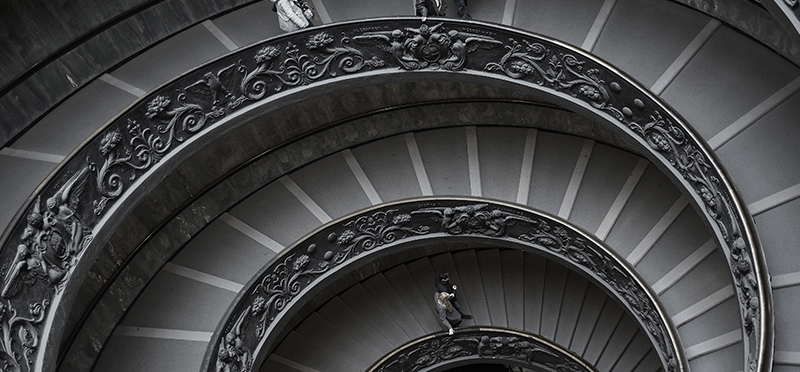
12.06.2020
Lifting the corporate veil
We will try to provide answers to the many questions surrounding the lifting of the veil. Although it is a figure of American origin, its application is global.
 Por
Castellano Gallego, Jesús
Por
Castellano Gallego, Jesús Lifting the corporate veil
In Spain, this jurisprudential doctrine was established by the Supreme Court in 1984. Since then, its use has been constant at first very restrictive and now significantly less selective, something that we will analyze later.
In Spain, capital companies have their own legal personality and are responsible for their obligations. The lifting of the veil is a limitation of the legal personality of the companies. Its final objective is to prevent the infringement of the rights and interests of third parties. It is a way of identifying companies that may be being fraudulently used, damaging third parties’ interests. As a clear anti-fraud mechanism, the lifting of the veil allows to sanction the managers of the company. As long as the managers have incurred in deceit or abuse, as we will explain later.
Requirements
The veil can only be lifted under specific circumstances. These do not necessarily have to go together. We cannot cover them all, but we can establish the most frequent ones. Some of these most frequent circumstances are the following, which we will try to exemplify later:
- Infra-capitalization: It occurs when there is a significant discrepancy between the capital invested by the partners and the object and the corporate purpose and risk. That is, an enormous gap between one and the other.
- External management. The Company is “de facto” being managed outside the governing board.
- Confusion of identities and assets: This occurs when both companies have the same registered address, telephone number, directors, etc. But in addition, their assets cannot be discerned separately. For this reason, it would be necessary to use the doctrine of the lifting of the veil to find out this information. However, it should be noted that the mere confusion of assets is not enough to proceed with the use of this doctrine. Generally, the concurrence of abuse or fraud of law mentioned below is also required.
- Abuse or fraud: Using the company to do acts contrary to the law or with an abusive character against the law.
- Attributing personal expenses to the company.
All these aforementioned situations have a common theme. This is, without doubt, the aforementioned damage to the rights and interests of third parties by the company. There is a clear abuse of the company´s legal personality with fraudulent purpose, contrary to the law. It is in these circumstances that the doctrine of the lifting of the veil, and with it, the immersion in the reality of the company, in order to discern and avoid that that the company can used to damage the interests of third parties, public or private. Furthermore, it is applied to prevent that the company is also used as a mechanism of fraud.
Si te ha interesado este artículo no dudes en leer:
Non-compliance with accounting duties
What does this mean for the company? And for the partners?
The partners of a company share the ownership of the company’s social assets. Companies also have a clear limitation system for the liability of the partners. The company is only liable for debts with its own assets. But not with the partners’ assets. Therefore, the partners do not own the assets included in the company’s equity. Neither are they responsible of the company’s debts. We cannot therefore make partners liable for the debts of the company.
But as we have previously mentioned, the lifting of the veil limits consideration of the legal personality of the company. This means that these debts can be attributed to the partner, who is therefore liable with his own assets. To do so, the partner must have acted in such a way that he can (and must) be held responsible for such a debt. These are the cases previously described. Although we will analyze certain relevant judgments later on, it is not superfluous to use an illustrative example:
Let us imagine that Marcos is the sole administrator of “A” company, and as consequence of its activity, A is immersed in debts. Later, he creates a company “B”. He incorporates B at the same registered office, and with the same contact details. But not only that, it also has the same corporate object and same customers. In addition, he begins to transfer assets from company A to company B. In this way, it ends up leaving A’s debts unpaid, leaving its creditors in a situation of defenselessness.
In this situation, through the lifting of the veil, the substrate of society “A” will be penetrated. Thus, we observe the abusive nature of the legal personality of company A, which is used to defraud creditors. Such fraudulent use will lead to a consequence which will depend on what is requested when suing Company A. However, both companies and the administrator himself, Marcos, may eventually be jointly and severally liable for payment of the debts and compensation. We therefore see a clear limitation of the principle of protection of the legal personality of companies.
How the partners respond
The partners, as we have seen in the example described above, can respond with their own assets. Note that these are corporate debts, which can however be charged to the partners for their actions. Therefore, the judge will charge the partners for obligations that were only of the company as a different legal personality.
How companies respond
As we have explained, companies will also be liable of the debts with their own assets. The debt may be jointly and severally attributed to a company that is not the one which incurred such debts. A judgment based on the circumstances of fraud and abuse of the company’s legal personality will damage company’s reputation.
Restrictive Application by Judges and Courts
The lifting of the veil is, as we have been explaining, an anti-fraud instrument. Excessive consideration of company’s legal personality must not be allowed if it damages the legitimate rights of third parties. But such fraud must be proven, that is to say, it is not valid as a mere assumption.
This doctrine is not regulated anywhere in the law. Therefore, the application of this doctrine by Judges and Courts must be unequivocally restrictive. This requires unequivocal facts which unequivocally infer the existence of the situations expressed before. That is to say, the existence of confusion of assets, personalities and fraudulent or abusive use of society, among others. Therefore, as an anti-fraud mechanism, it is clear the exceptionality of the lifting of the veil figure.
Paradigmatic resolutions of the Supreme Court
Abuse and fraud as a prerequisite for the lifting of the veil
STS 47/2018 of 30 January reflects a detailed example of the application of the doctrine we have been studying (STS: Supreme Court’s Judgement). It involves a lawsuit in which a community of neighbors requests the joint condemnation of two societies. These companies were a construction company and a property development company, which were held liable for construction defects. Both companies were condemned in both first and appeal instances, judgments reaffirmed by the SC. It does so on the following basis:
- There is abuse and fraud against the buyers. Their trust was abused and a different external appearance from the real one was faked. From the contracts there is an evident confusion between the names of the developer and the builder. This creates the appearance that both companies were the same. However, they try to avoid their liability by expressing that they are not the same.
- Defendants are taking advantage of a basic commodity (housing) to avoid their responsibilities and obligations. This can be deduced from multiple evidence, including complaints of defects in the records of reception (there were a lot of them). This suggests that both defendants have the same interest and objective.
- The Real Estate developer company changed its name, and then enters the competition. This is done with clear fraudulent purpose in order to avoid responsibility. Therefore, the confusion and abuse of these companies is clear.
From all the above, it is clear that there is a single interest and objective between both entities. Both being used to abuse and defraud the buyer. The confusion that both corporations produced means that they must both respond in a joint manner. Thus, the Supreme Court ratified the decision taken by previous court instances.
Corporate succession to defraud creditors
As included in STS 691/2017 of December 20th. A company sues two other companies (hereinafter A and B) to pay a debt of A jointly and severally. The claimant, after having carried out some work for A, found that it was not being paid. In addition, the following circumstances occurred:
- A second company (“B”) is created, which coincides in domicile and social object with “A”.
- A partner of A, who ordered the works, is now the sole manager of B.
- This partner and administrator emptied out A’s business and assets and transferred them to B. Therefore, there is a fraudulent succession of companies to avoid responsibility for the payments due.
- Even the operating license is transferred from A to B.
For all the reasons mentioned above, the SC upholds the decision of the previous instances. That is, the order to pay the amount requested to both companies jointly and severally. It considers that the succession of the companies took place with the aim of prejudicing the collection of the legitimate creditors. Therefore, establishing the necessary application of the lifting of the veil in this case.
Conclusions
The companies have their own legal personality and are liable for the debts they incur with their assets. However, this characteristic has been subject to fraudulent and unlawful actions. To combat them, the jurisprudential doctrine of lifting the veil was created. When it is proven, and under exceptional circumstances, limits may be placed on legal personality of companies. This will be done in order to penetrate the “substratum” of the questioned company. In this way, the reality of the company will be seen, so that infringement of rights and interests of third parties does not occur. This anti-fraud mechanism will make it possible to claim the debt from those who actually have to pay it for their actions, whether they are more companies or a natural person. Therefore, it is clear how valuable this jurisprudential doctrine known as lifting the veil is.
If this article has been of interest, we also suggest you to read the following article published on our website:












